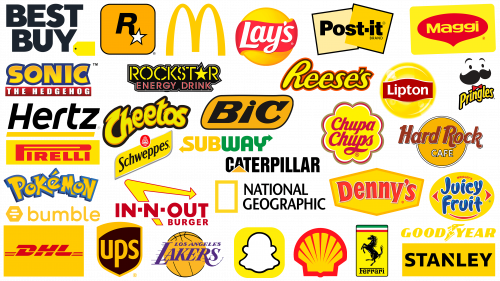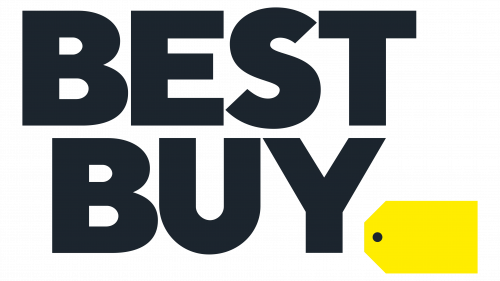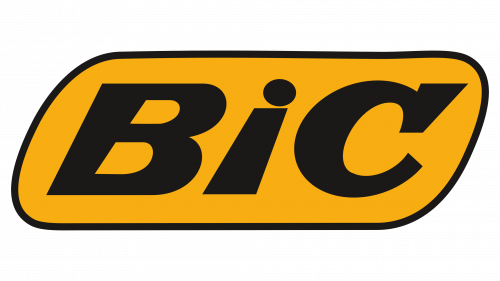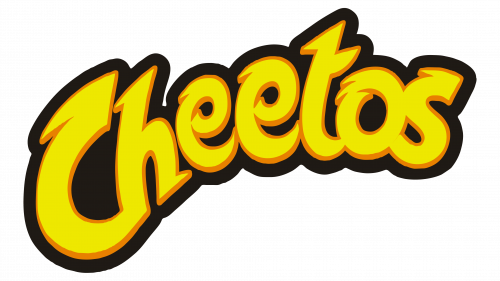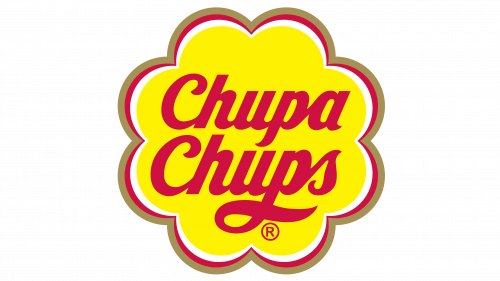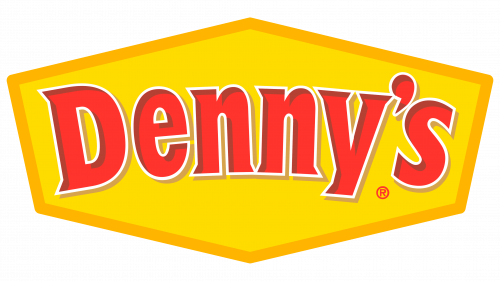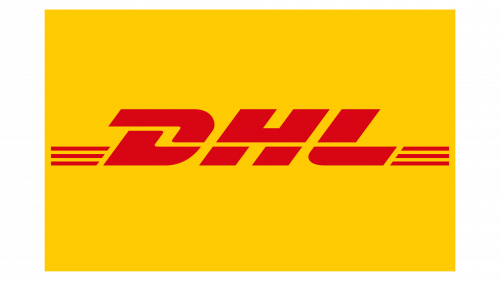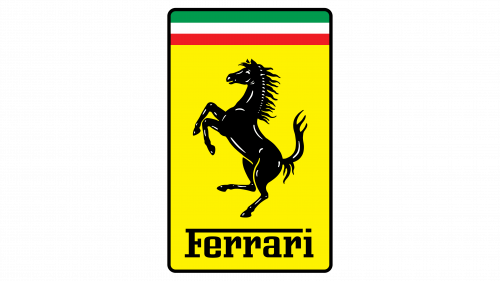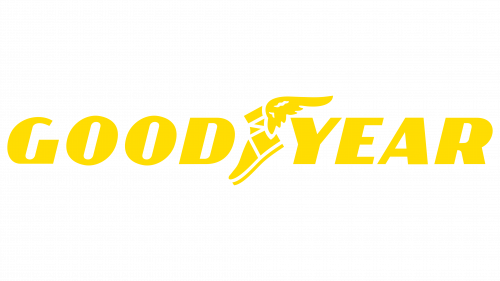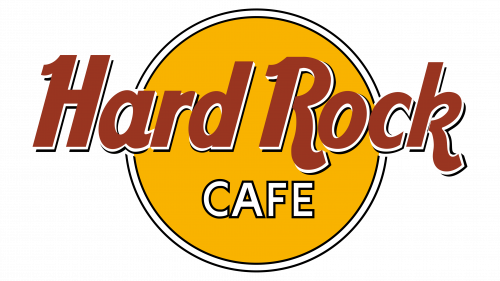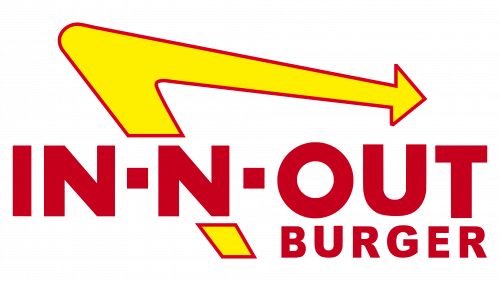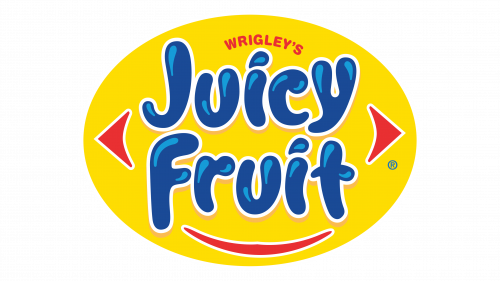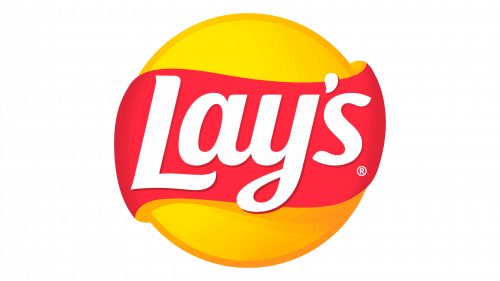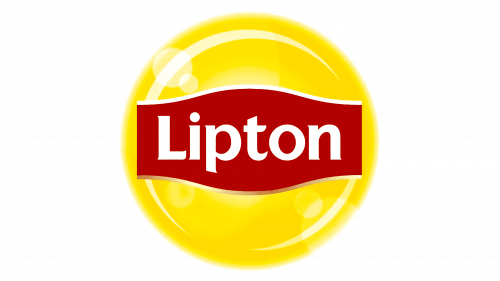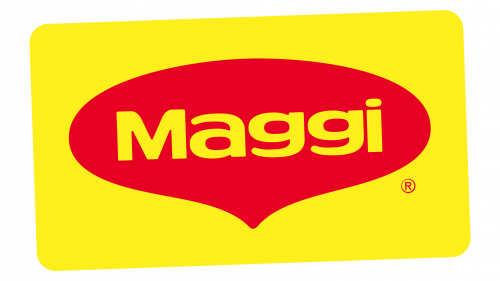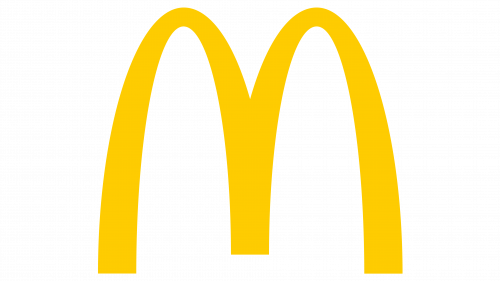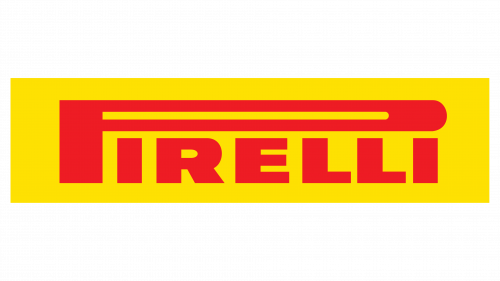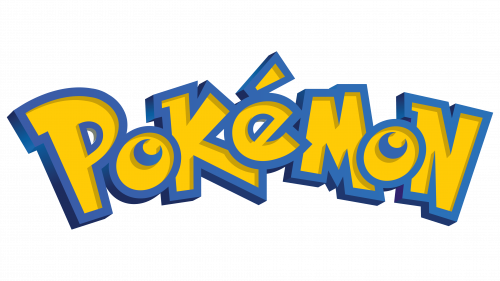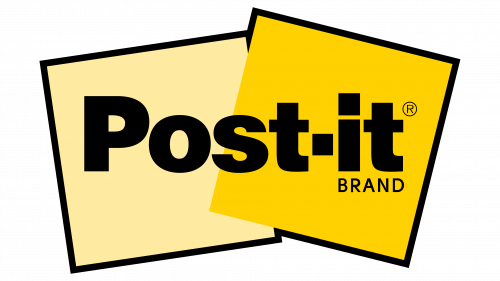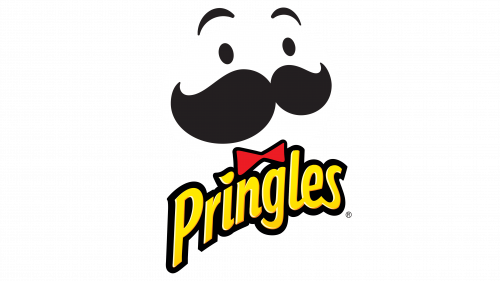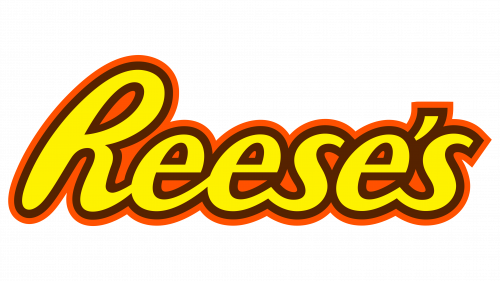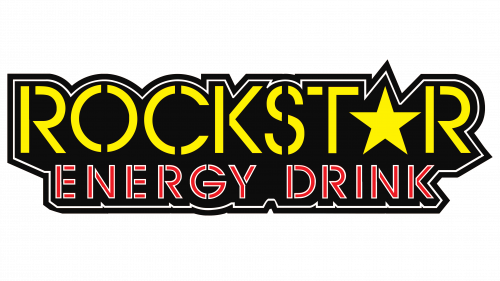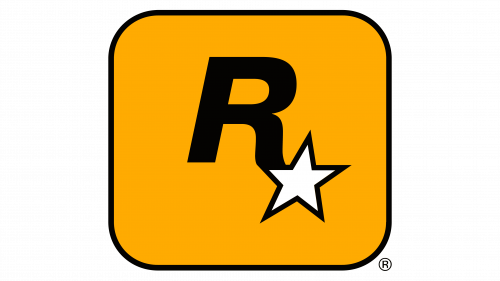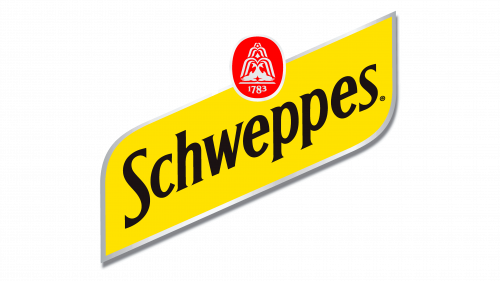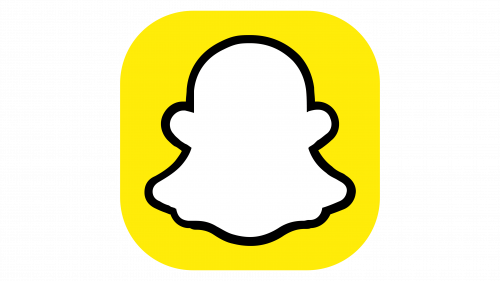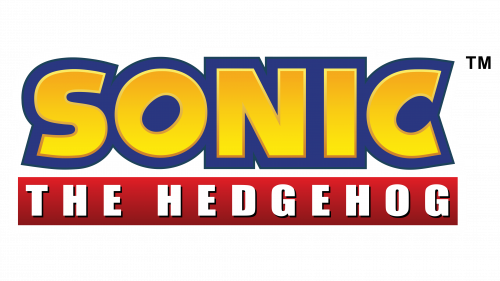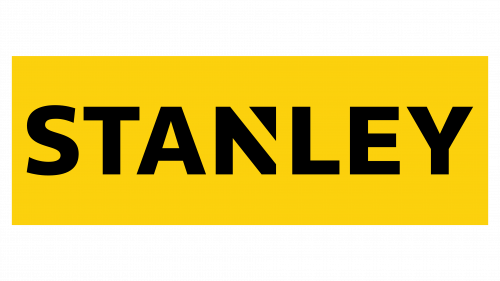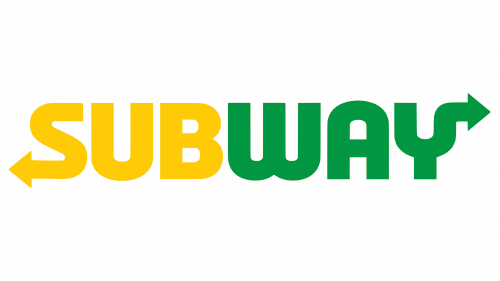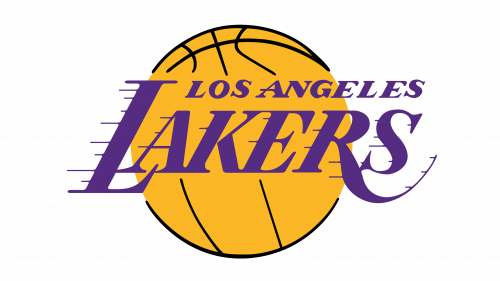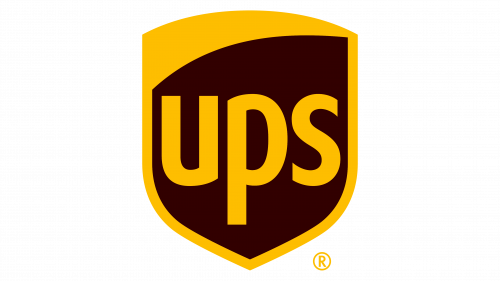When you think about the world of brand identity, a lot of yellow logos come to mind. These emblems are imprinted on people’s minds because of their brightness and the emotions they evoke. Famous brands such as McDonald’s have shining golden arches, and Best Buy uses bright yellow lettering, which emphasizes the prevalence and appeal of this hue in corporate branding.
Filled with life and energy, yellow is impossible to ignore. Its brightness is not limited to corporate logos: it can be unmistakably seen in tools such as markers, safety vests, and warning labels. But beyond its ability to grab the viewer’s attention, yellow is a receptacle of emotion and symbolism.
Being the lightest of all colors, yellow radiates positivity and inspiration. It evokes feelings of happiness, enthusiasm, and optimism. Beyond fun, yellow ignites the flame of innovation, stimulating creativity and fostering unique ideas. The color’s association with curiosity and exploration further strengthens its popularity in various fields.
A number of businesses, recognizing the appeal and emotional depth of yellow, have seamlessly incorporated it into their brand identity. These brands use yellow to give it an eye-catching sheen and embody a variety of sentiments.
Why do companies use yellow in their logos?
In the realm of corporate identity, choosing a logo color is not just a matter of aesthetic preference. This choice is driven by complex psychology, cultural perceptions, values, and brand messages.
In branding, each hue has a unique psychological profile, evoking certain emotions and feelings. The use of these colors helps to elicit the desired reaction from the target audience, ensuring the brand resonates with a sea of competitors.
Among the spectrum of colors, yellow occupies a multifaceted position. Its brilliance can uplift, enliven, and attract attention. However, in certain contexts and combinations, particularly when juxtaposed with black, it reminds us of cautionary symbols, forcing us to be vigilant and attentive.
The universality of the yellow color is also manifested in its application. Its warm and radiant character often evokes feelings of optimism, joy, and friendliness. At the same time, its intensity, especially when used excessively, can strain the eyes, causing a sense of overwhelm. Therefore, while using yellow for its vibrant colors, savvy brands often balance it with more neutral tones, such as white, in extensive visuals and product packaging.
Yellow can be a double-edged sword in branding. On the one hand, it radiates enthusiasm, warmth, and positivity, making it preferable for brands that want to exude goodwill and energy. On the other hand, its intensity requires careful handling so that it doesn’t become overwhelming and cause unintentional aggression. As with any branding element, understanding and utilizing the nuances of yellow requires a combination of art, science, and cultural knowledge.
Best Buy
Best Buy’s emblem in retail branding is prominently featured through the vibrant use of the color yellow. This bright hue acts as a visual magnet, effortlessly attracting the eyes of shoppers from all directions. The brilliance of this color lies in its ability to attract attention, making it an effective brand recall tool.
In addition to yellow, the Best Buy logo uses a combination of black and white. This combination further accentuates the emblem by evoking associations with important notices or high-contrast ads, thereby emphasizing the brand’s importance in the retail industry.
The tag-like shape reinforces the idea of price tags, subtly hinting at the brand’s value proposition. It represents the store’s promise: a place where consumers can expect a wide range of products and competitive prices. Combined with the brand name, this visual cue reinforces the idea that Best Buy is synonymous with value-driven purchasing decisions.
BIC
In the annals of corporate identity, the BIC logo stands out as a beacon of consistency. Raymond Savignac, the creative creator of the logo, captured the essence of the brand through the distinctive use of yellow. This is not the usual bright yellow but a deeper shade carefully chosen to reflect the ethos of the brand.
The significance of this color choice cannot be overstated. Yellow, a color associated with happiness and energy, has been further developed in BIC’s vision. Here, it is associated with creativity and discovery, indicating a thirst for knowledge and innovation.
As the BIC brand gained dominance in writing instruments and related products, yellow became more than just a color. Through its logo, BIC subtly conveys the idea that every scribble, every note, and every drawing has the power to spark innovation and bring new ideas to light.
Bumble
Yellow is often associated with brightly colored creatures such as bumblebees. For a brand with the name “Bumble,” yellow was a natural choice for a logo. Not only does this hue evoke the image of a bee, but also feelings of warmth, optimism, and positivity.
To further refine its image and avoid the possible connotations of warning or danger that black and yellow patterns often symbolize, the brand consciously decided to replace the bee’s typical black stripes with crisp white ones.
Thanks to its clever design, the Bumble logo carries a double message. On the one hand, it alludes to its namesake, the bumblebee, and on the other hand, it creates a sense of inclusivity and camaraderie.
CAT
The CAT brand, known worldwide as a manufacturer of construction equipment, has strategically chosen a color scheme that directly relates to its core industry. Complemented by contrasting black, the signature yellow color is reminiscent of the warning signs and equipment often found on construction sites.
Yellow is an indication of caution and safety, as well as other important meanings. In the construction industry, where every project requires innovation and precise planning, these qualities are paramount.
The triangular shape of the logo, a universally recognized symbol, can speak of stability and strength – important qualities for a company that produces reliable machinery that can withstand difficult conditions.
Cheetos
The Cheetos emblem exudes a cheerful and friendly attitude, making it memorable to its audience. Taking inspiration from the brand’s mascot, the cheetah, the font contains attributes that subtly mimic the texture of cheetah fur. The use of yellow and orange hues further reinforces this association.
Such vibrant hues, especially bright yellow, are not just an aesthetic choice; they strategically emphasize the cheesy zest that characterizes the brand’s snacks. These colors recall the rich, tart flavor of cheese, which is the main ingredient of the Cheetos line.
The choice of color serves a dual purpose. In addition to hinting at the taste of the product, the bright yellow color radiates energy, reflecting the lively and playful nature of the brand’s mascot.
Chupa Chups
Attracting attention and evoking a sense of joy, yellow has taken a prominent place in the Chupa Chups emblem. This bright hue, embodied in a floral design, attracts the eye and evokes feelings of joy and youth. This design choice seems quite appropriate for a brand selling confectionery products that aim to attract and entice.
While some food brands use a powerful combination of red and yellow in their visual branding, Chupa Chups is different in that it emphasizes brightness and vibrancy. The motive behind this color scheme is clear: it resonates with a younger audience. The company’s colors emphasize the sweetness of the product and convey a sense of friendliness and accessibility, especially for younger consumers.
Denny’s
In the busy arena of fast food companies, the psychology of color plays a key role in influencing consumer behavior. Yellow, the dominant color in this industry, was carefully chosen due to its profound effect on emotions, particularly its ability to evoke feelings of happiness and whet the appetite. This combination becomes even more powerful when complemented with the color red, as seen in some iconic brand logos. Some psychological studies show that this duo induces feelings of hunger and perhaps imperceptibly increases the metabolic rate.
Denny’s emblem is a testament to the power of well-executed branding. Its vibrant yellow and red palette holds a special place in Americans’ visual memory. In addition to color, the playful font enhances the brand’s appeal by hinting at the restaurant’s welcoming, casual atmosphere. Such design elements resonate particularly well with family audiences, conveying the promise of a pleasant, casual dining experience.
DHL
The DHL emblem occupies a unique place in the vast corporate branding space, leaving an indelible mark with its vibrant combination of yellow and fiery red. DHL’s palette doesn’t evoke a sense of appetite like many brands that use this color combination, but it conveys a different message.
The bright yellow of the DHL logo, contrasted with the vibrant red, represents energy, efficiency, and responsiveness. The deliberately slanted typeface reinforces the sense of fast-paced movement, reflecting the speed and reliability the brand promises in logistics and delivery.
Ferrari
Known for its colorful emblem, Ferrari stands out in the automotive sector with its signature yellow emblem. It is this shade that sets Ferrari apart from other dominant players in the automotive market, who mostly use colors such as white, silver, and blue in their branding.
The choice of yellow color in the Ferrari logo is not only due to aesthetic appeal. In design and branding, this color is often associated with energy, liveliness, and uplifted mood. By using this shade, Ferrari emphasizes the impetuosity of its cars and positions itself as an innovator, not afraid to stray from the usual path.
Goodyear
The Goodyear emblem brilliantly demonstrates the power of color dynamics in representing the brand. Using bright yellow, it embodies the concepts of energy and zest. Combined with the deep blue hue, it gives the design an air of reliability and reassures consumers of the brand’s impeccable reputation.
If we delve into the symbolism of the blue shade, it brings to mind the vast sky with its expanses and mysteries. These vastnesses reflect the story associated with Hermes, an ancient Greek deity known for his swift movements across the sky, connecting the gods with their messages. The symbolic depiction of Hermes’ famous winged shoe in the logo emphasizes this connection, positioning Goodyear as a brand that represents speed and reliability.
Beyond visual aesthetics, the contrasting yellow and blue hues have a purpose – they create a harmonious chord between dynamism and steadfastness. This combination of colors reflects the company’s commitment to unwavering efficiency and reliability.
Hard Rock Café
In the world of corporate branding, the power of color is often used to convey certain emotions and messages. Among the wide range of colors, yellow is a dynamic choice. It is synonymous with liveliness, energy, and warmth – qualities that can seemingly be at odds with the harshness often associated with genres such as rock and roll.
Hard Rock Café demonstrates the versatility of the color yellow. Their logo intriguingly utilizes a yellow circle, infusing the symbol with enthusiasm and vigor. This design decision boldly changes the perception of the color yellow, claiming that it can echo the electric pulse of rock music.
The combination of yellow and rich brown gives the logo another layer of depth. This combination creates a cozy, earthy atmosphere, balancing out the energetic yellow and creating a disposable environment.
Hertz
Hertz’s decision to incorporate yellow into its logo is a testament to the power of color. When combined with black, yellow creates a striking visual contrast, making the brand instantly recognizable. While yellow adds a vibrant spark, the understated hue provides a sense of sophistication and class.
Hertz’s visual identity has undergone an evolution. Yellow has been more dominant, acting as a beacon that conveys the company’s vibrant ethics and commitment to service excellence in the car rental industry. Hertz strives to strike a balance between a vibrant past and a sophisticated present, reducing the intensity of yellow in recent adaptations.
In-N-Out
A study of corporate logos reveals a palette rich in symbolism and meaning. Among the spectrum of colors, yellow often stands out, especially in industries that are meant to stimulate the appetite and create a sense of warmth. Its bright hue evokes a sense of vigor, energy, and hunger – attributes without which no fast food industry can do without.
A prime example is the In-n-Out emblem, which cleverly incorporates a bright yellow arrow. This arrow is not just a design element; it is filled with meaning. It serves as a visual magnet, attracting attention and directing visitors to the culinary delights that await them inside. On the other hand, it represents efficiency and speed of service. The arrow subtly emphasizes the brand’s commitment to quick service, whether a person chooses to dine in or prefers the convenience of a drive-thru.
Juicy Fruit
Branding strategies often use the psychology of color to evoke certain emotions and associations in potential consumers. Juicy Fruit, internationally recognized as a leading chewing gum company, is the epitome of this approach. This brand’s logo combines vibrant hues centered around the color yellow, hinting at an enticing taste that may remind one of tangy fruits, especially lemons.
The connotations of yellow go far beyond just the color of fruit. Around the world, it is associated with a sense of vitality, liberation, and the vigor of youth. This hue evokes images of a sunny day, spontaneous laughter, and the joy of new experiences. The use of yellow in the Juicy Fruit logo doesn’t just speak of flavor but also hints at joyful experiences of moments filled with delight and whimsy. The font in the logo further reinforces this impression.
Lay’s
Lay’s, with its bright yellow logo, holds a special place in the world of snack brands. Started in 1932 in the United States, the brand’s round yellow logo is now synonymous with snacks in all global markets.
The intertwining of red and yellow in the logo is no accident. This palette subtly stimulates the observer’s appetite using the principles of color psychology. If red color causes excitement and appetite, yellow complements it, causing joy and happiness.
In addition to the primary colors, the Lay’s emblem uses an orange gradient, giving an aura of warmth and coziness. This warmth and the round shape, reminiscent of a radiant sun, evoke a sense of liveliness and positivity.
Lipton
The Lipton logo, which has become familiar to tea lovers, is instantly recognizable and resonates deeply with fans of refreshing beverages. The dominant yellow hue is strategically chosen and evokes several attractive associations. The image of a bright slice of lemon, which is often added to iced tea to give it zest and flavor, comes to mind. In addition, the bright hue can evoke the image of a radiant sun, symbolizing warmth, energy, and rejuvenation.
Lipton iced tea logo design radiates an attractive and energetic aura. It encapsulates the essence of vigor and enthusiasm, and each sip is not just a drink; it is an entire event. The bright yellow color combined with the overall design denotes the tantalizing taste sensations and refreshing taste of the drink.
Maggi
Deeply rooted in the food industry for over a century, Maggi has cemented its position as a leading brand of instant noodles, a variety of condiments, and soups. Its sustained presence is not only due to the quality of its products but also to its visual brand identity.
Maggi’s branding attracts attention and evokes associations using a bright palette of yellow and red colors. These colors are chosen for a reason. In the food industry, yellow and red are often used to whet the appetite and evoke feelings of warmth, comfort, and familiarity. Indeed, one glance at these hues can involuntarily trigger a desire to taste, making them ideal for a brand targeting the tastes of people from all over the world.
In addition to stimulating the appetite, the yellow color of the Maggi logo can conjure up associations with aromatic spices such as turmeric, a golden-colored spice known for its flavor and health benefits. Similarly, the color red can recall spices such as paprika or red chili, which are an integral part of many culinary traditions. This subtle hint of spice underscores Maggi’s commitment to flavor and a wide range of seasonings to satisfy a variety of tastes.
McDonald’s
The gleaming golden arch is tall and unmistakable in the vast world of corporate identities. This emblem, owned by McDonald’s, is probably one of the most famous yellow logos in the world. Regardless of one’s location, from bustling metropolises to quaint towns, the sight of this symbol invariably evokes a sense of familiarity and anticipation.
McDonald’s skillfully utilized a golden hue in its signature letter “M” to achieve more than just visual appeal. The bright yellow color is strategically chosen to attract the attention of passersby, making it especially effective for those on the move, perhaps contemplating a quick bite to eat. Its brightness serves as a beacon, signaling the availability of a convenient dining option, whether one is seeking the comfort of well-known favorites or the joy of tasting limited regional offerings.
Complementing the yellow color, McDonald’s incorporates a rich red hue into its brand palette. This combination is not only aesthetically pleasing but also has a deeper psychological meaning. The combination of yellow and red is believed to stimulate the appetite, making it a good choice for a food service establishment. These colors together create a compelling visual image – warmth, appetite, and instant gratification.
National Geographic
The Nat Geo logo is an iconic symbol of enlightenment, exploration, and knowledge. A renowned television and magazine conglomerate, National Geographic covers a myriad of topics spanning world history, complex fields of science, and the diverse tapestry of world geography.
The prominent yellow square framing the National Geographic emblem is not just a design move; it symbolizes a window to the world, inviting viewers and readers to embark on a journey of discovery and enlightenment. Bright and invigorating, this shade of yellow echoes the spirit of a fresh dawn, heralding new beginnings, fresh perspectives, and disruptive innovation.
The yellow hue resonates with all age groups, making it a good choice for educational events. The versatility of this color allows it to find common ground with the most diverse audience – from a young, inquisitive person to an experienced scientist. The versatility of this color is further enhanced by its association with optimism, creativity, and thirst for knowledge.
Pirelli
The Pirelli tire company is notable for its thoughtful use of colors. Over its rich history, the brand has used shades such as black, white, and red in its emblem. Especially iconic is the image of the Pirelli logo, where a bold red inscription is painted on a bright yellow background. This combination of colors is no accident: it was strategically chosen to evoke a sense of liveliness and dynamism.
This vivid visual representation is fully in line with Pirelli’s core principle. The energy radiating from the logo reflects the company’s commitment to excellence. The simplicity and color choice of the Pirelli emblem allows us to effectively communicate the essence of the brand to the audience.
Pokémon
Among the colors loved by the masses, yellow stands out, radiating brightness, enthusiasm, and youthfulness. This makes it apt for the Pokémon logo, a brand whose essence is intertwined with the adventure and zaniness of youth.
The Pokémon franchise, which has captured the hearts of people around the world, beckons viewers into a realm teeming with new creatures and uncharted territories. The color yellow not only represents the ingenuity of this universe but also harmonizes perfectly with the underlying theme of exploration and novelty.
The choice of yellow goes beyond mere aesthetics. It embodies the very spirit of Pokémon. Each episode, each game, and each map unfolds a story of exploration, a journey into the unknown, and surprises waiting around every corner. Characters driven by unquenchable curiosity and a thirst for adventure find themselves in a variety of situations, each more complex and exciting than the last.
Post-it
The color yellow, often associated with vigilance and attracting attention, is present in many products. Among them, Post-it is particularly notable. This product, which has entered the daily life and organizational habits of many people, is almost synonymous with the concept of “reminder.” The bright yellow hue of the classic Post-it note is designed not only for aesthetics but also to make the note stand out visually without leaving tasks or recorded messages unnoticed.
The evolution of the Post-it brand has been amazing. Over the years, the brand has expanded its product range to cater to a variety of needs. From minimalist to colorful, subtle to expressive, there is a Post-it design to suit every taste. This diversity is evident in the shades and designs presented, especially when you look at the Post-it logo. The Post-it logo showcases a palette that goes beyond the traditional yellow, indicating the brand’s adaptability and sensitivity to consumer preferences.
Pringles
The highly acclaimed Pringles emblem cleverly uses the color yellow in its wordmark to evoke feelings of appetite and joy. It is this shade of yellow, complemented by a subtle gradient, that reflects the tantalizing hue of the chips in the can. This color choice evokes desire and reinforces the positive emotions associated with snacking.
In the realm of food branding, color combinations play a key role. Pringles, a company with an attention to detail, tactfully combines yellow with a touch of red. This combination is evident in the mascot’s bow tie, adorned with a rich crimson color that adds depth to the overall design. This combination of yellow and red serves a dual purpose: while yellow evokes feelings of hunger and warmth, a touch of red lends energy and passion.
Reese’s
Reese’s artfully uses a combination of colors to create its memorable visual identity. Central to its palette is a radiant shade of yellow, which is often associated with feelings of joy and delight. This choice draws customers into a world of sweetness and positivity before they even try the product.
In the Reese’s logo, the color yellow is accompanied by rich shades of brown and orange. While brown is associated with the delicious chocolate for which the brand is famous, orange contrasts dynamically with it, infusing the logo with energy and zest. Together, these colors form a harmonious trio, each playing its own role in conveying the essence of the brand.
Rockstar
Rockstar has a prominent place in the world of energy drinks, thanks in large part to its bright yellow logo. This hue was not chosen by accident – it intentionally indicates the enthusiasm and dynamism that the brand promises. When you think of electricity or a rapid flash of lightning, you get a sense of instant energy. Such associations make yellow a suitable color to indicate a product designed to invigorate.
The choice of color resonates on another level as well. Stars, those shining celestial bodies twinkling in the night sky, are often represented in yellow or gold. It’s no coincidence that Rockstar uses this color in its symbol. The star element and energetic hue reflect the essence of the brand: a powerful source of vigor, ready to ignite the spirit. The Rockstar logo, in its design and color scheme, effectively embodies the core promise the brand has made to its consumers.
Rockstar Games
Founded in 1998 as an American video game publisher, Rockstar Games quickly rose to prominence by releasing numerous critically acclaimed games. Among their extensive repertoire, games such as Red Dead and Grand Theft Auto stand out, gaining worldwide acclaim and cementing the company’s position as a titan of the industry.
The Rockstar Games logo embodies the spirit and ethos of the company. The central element of the emblem used an orange-yellow shade, radiating vitality and vigor. This choice of hue is not just an aesthetic component; it paints a picture of the dynamism and innovation that the company brings to its projects.
The combination of black, white, and yellow colors in the logo performs a double function. Not only does it give the logo depth and volume, making it more attractive, but it also visibly positions Rockstar Games in a unique space. By using these colors, the company distinguishes itself from traditional warning signs, which often feature black lettering on a yellow background.
Schweppes
In beverage branding, the Schweppes logo is notable for its use of color. Known primarily for its lemon-flavored drinks, the company uses a yellow banner and word mark in its logo, linking them to the tart essence of the citrus fruit. Yellow isn’t just a color; it’s an emotional cue, subtly signaling the flavor explosion that awaits the consumer.
Recently, the shade of yellow used in the Schweppes logo has changed to a warmer shade. While this choice is not explained in the official statement, it can be assumed that it is meant to differentiate the brand from the traditional black and yellow warning signs. The choice of a warmer yellow color can be seen as a deliberate move to create a soothing and inviting brand image.
The color is accompanied by elegant and simple typography that complements rather than suppresses the color. The harmonious combination of wordmark and banner reflects the brand’s heritage while remaining relevant and appealing.
Shell
The combination of red and yellow in branding has an inherent ability to attract attention, which is a testament to their vibrancy and brightness. Shell’s use of these colors is a prime example of how these hues can evoke certain emotions or messages without leaning toward the usual sense of hunger. On the contrary, the Shell emblem radiates a sense of vigor and significance.
Yellow in color symbolism is often associated with longevity, constancy, and indefatigable energy. It evokes the persistent sun that rises every day or the endurance required for marathon distances. This shade subtly emphasizes that the company is forward-looking, reiterating its mission to offer sustainable energy solutions.
Red, on the other hand, emphasizes the relevance and importance of Shell’s offerings. It serves as a reminder of the company’s critical role in providing fuel for our daily lives and the wider economy. In many cultures, red symbolizes urgency, strength, and importance, making it a fitting color for a leading energy supplier.
Snapchat
In the dynamic world of corporate identities, Snapchat’s emblem stands out prominently despite being relatively new to the corporate world. Its bright yellow hue immediately evokes a sense of playfulness, brightness, and youthfulness. Among the many company logos, when one thinks of bright yellow emblems, Snapchat undoubtedly evokes the most striking associations.
The use of a glowing yellow hue serves a dual purpose for Snapchat. On the one hand, it emphasizes the spontaneity and lightheartedness of the interaction, which resonates with the brand’s target audience. On the other hand, this choice ensures visibility on smartphone screens, setting it apart from the sea of apps.
Sonic the Hedgehog
The Sonic the Hedgehog emblem, globally recognized as a trademark of the video game, represents the spirit and essence of the franchise. The bright yellow hue brings zest and dynamism, reflecting the tireless energy of the game’s protagonist, Sonic.
If you delve deeper into the color palette of the logo, you’ll find a thoughtful representation of the central characters of the series. Blue symbolizes Sonic, the impetuous and daring hero. Yellow echoes Tails, Sonic’s faithful sidekick known for his two-tailed agility. Red symbolizes Knuckles, the tough and determined guardian of the Master Emerald. Together, these colors create a visual narrative that symbolizes the friendship and unique personalities of these key characters. Each hue of the logo indicates the adventures, challenges, and partnerships that are integral to the game’s story.
Stanley
In branding, colors convey a brand’s message, ethics, and values. With its vibrant aura, yellow embodies a variety of feelings, from simple happiness to more intense assertiveness. If you look closely at the Stanley logo, the deep yellow tone is unmistakably associated with the DIY sector. This association is further strengthened by the fact that it echoes the signage that is usually placed in construction zones.
Yellow symbolizes caution and is recognized by many communities around the world. Brands that work in industries that require extra caution, especially in complex jobs such as cutting or material handling, benefit from the hidden message of this color. By using this vibrant hue, the Stanley emblem emphasizes the meaning of meticulousness and focuses on safety.
Subway
Subway’s logo stands out prominently, emphasizing its commitment to freshness and health. The emblem uniquely combines yellow and green arrows intersecting to form the letter “S,” which is a visual representation of the brand’s name.
The combination of these two colors – yellow and green – evokes images of nature, health, and vitality. Sun-drenched fields or the bright hues of freshly picked produce immediately come to mind. This choice of colors is not just a coincidence but a deliberate design element that embodies the brand’s core values and offerings.
Yellow, which often symbolizes energy, positivity, and sunshine, combined with green, which is commonly associated with nature, growth, and health, creates a powerful visual message. This combination serves as a reminder of Subway’s commitment to offering nutritious and fresh alternatives in the fast food sector. The arrows in the design subtly hint at forward movement and progress, which is consistent with Subway’s modern approach to the fast food organization.
The LA Lakers
Across the diverse spectrum of brand design, yellow has consistently proven to be the color of choice, especially in sports, where yellow is often associated with a particular region or ethnicity. A case in point is the LA Lakers team, whose distinctive combination of yellow and purple has not only carved out a niche for itself but has also left an indelible mark on viewers’ memories.
Yellow and purple are complementary colors, positioned as opposites on the color wheel. Their combined presence creates visual balance, attracting attention and creating a pleasing aesthetic. In a highly competitive sports and show business environment, such thoughtful branding solutions enhance memorability and set a company apart.
UPS
UPS, one of the well-known brands with a yellow emblem, presents a striking and eye-catching visual identity. Its golden shield, complemented by brown details, is more reminiscent of the luxury of gold than the usual yellow color. It is this shade that can create a sense of exclusivity and honor.
The golden hue effectively conveys a sense of high respect and superiority. At the same time, it emphasizes the zest and dynamism inherent in UPS’s global shipping operations. The combination of golden yellow with earthy brown tones provides a balance indicative of luxury and reliability.
The UPS logo is the epitome of responsiveness combined with unrivaled service. It reassures customers of the brand’s vigor and high-quality service.
The meaning of color in popular yellow logos
Yellow is undoubtedly one of the most prominent hues in the visual identity of many iconic brands. Due to its innate brightness, logos using this hue rarely go unnoticed, making it one of the best options for companies looking to attract and retain the attention of potential consumers.
In the realm of branding, the adaptability of yellow is truly commendable. This hue is capable of conveying a multitude of feelings. From feelings of joy, optimism, and youthful exuberance to emphasizing ingenuity and forward-thinking, yellow easily traverses a wide emotional spectrum. At the same time, it’s worth noting that, like all colors, yellow is not without negative consequences when misapplied or taken out of context.
The prevalence of yellow in branding is not only due to its appeal. It has a deep resonance with human psychology. Subconsciously, this shade can evoke feelings of warmth and memories of sunlight and even awaken the desire to eat, being associated with some appetizing fruits and products. Thus, yellow becomes the color of choice, especially for brands that evoke positive associations and emotions.
The key is to use this color wisely. A balance between it and other shades or the right choice of hue can make the difference between a brand from uplifting and cheerful to too intense and irritating. Despite the fact that the yellow color opens up a wide range of branding opportunities, a competent approach is required to unlock its potential.
